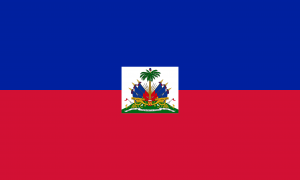Language/Haitian/Culture/Haitian-Independence
| ◀️ Drinks — Previous Lesson | Next Lesson — Haitian Geography ▶️ |
As a Haitian language teacher, it is important for you to not only impart knowledge of the language but also to provide your students with insights into the rich culture and history of Haiti. In this lesson, we will delve into the Haitian Revolution and the country's struggle for independence.
Consider broadening your understanding by checking out these related lessons: Haitian Geography & Haitian Music Styles.
Haiti Before the Revolution
Before the revolution, Haiti was known as Saint-Domingue and was a French colony. It was a major producer of coffee, indigo, sugar, and other crops, using the labor of slaves brought over from Africa. The majority of enslaved Haitians were of African descent, with smaller numbers of enslaved Amerindians and people of mixed ancestry.
The enslaved population in Haiti outnumbered the white colonizers, and the harsh conditions led to many revolts and rebellions. The most famous of these was the Haitian Revolution.
The Haitian Revolution
In August 1791, the enslaved population of Haiti rose up against their French colonizers. The revolt, led by Toussaint Louverture and later by Jean-Jacques Dessalines, lasted for over a decade and ended with Haiti becoming the first black republic in the world and the second independent country in the Americas after the United States.
The Haitian Revolution had a significant impact on world history, as it challenged the notion that enslaved people could not lead successful rebellions. It also had a major impact on international politics, with European powers refusing to recognize Haiti as an independent country for many years.
Haiti's Struggle for Recognition
Despite becoming an independent country in 1804, Haiti struggled to gain international recognition. Other countries feared that the success of the Haitian Revolution would inspire enslaved populations in their own colonies to rise up and seek their own independence. It was only in the mid-19th century that Haiti began to establish diplomatic relations with other countries.
Haiti's struggle for recognition by the international community continues to this day. The country has faced numerous political and economic challenges, including poverty and natural disasters, but its resilient people continue to work towards a brighter future.
Haitian Geography
Haiti is located on the western side of the island of Hispaniola, which it shares with the Dominican Republic. It is a mountainous country with a rugged terrain that makes transportation difficult. The capital and largest city is Port-au-Prince, which has a population of over 1 million people.
There are many other cities in Haiti, including Cap-Haïtien, Gonaïves, and Jacmel, each with its own unique culture and history. Haiti is also home to several mountain ranges, such as the Massif du Nord and the Chaîne du Trou de l'Eau, as well as several rivers, including the Artibonite River and the Grande Rivière de Jacmel.
Conclusion
Learning about the Haitian Revolution and Haiti's struggle for independence helps us understand the rich cultural and historical context of the country. It also provides important context for understanding Haitian language and culture today.
As a Haitian language teacher, I encourage my students to continue exploring Haitian history and geography as they progress through their language studies. By connecting language learning with cultural exploration, students gain a deeper appreciation for the Haitian people and their unique history and culture.
Well done on mastering this lesson! Don't miss these related pages to expand your knowledge: Haiti Timeline & Haitian Dance.
Videos
Chef Marcus Samuelsson Learns to Make Haitian Independence ...
Marlene L. Daut, "The Haitian Atlantic" - YouTube
Haitian Revolutions: Crash Course World History #30 - YouTube
Freedom Soup | Haiti | New Year | Traditional | Haitian | Soup | Read ...
Other Lessons
- Haitian Holidays
- Haiti Timeline
- Haitian Geography
- Haitian Music Styles
- Haitian Painters
- Haitian Dance
Sources
- Haitian Revolution | Causes, Summary, & Facts | Britannica
- Celebrate Haitian Independence Day with Soup Joumou! | Health ...
| ◀️ Drinks — Previous Lesson | Next Lesson — Haitian Geography ▶️ |

